KTM’s 2020 EXC Enduro Range: In Context
Joachim Sauer is the Senior Technical and Marketing Product Manager for KTM’s off-road models. He’s a former European Enduro and ISDE champ, and has been with the company for more than 30 years – which makes him better placed than anyone on the planet when it comes to putting KTM’s new-generation 2020 EXC model-range in context. We asked the man affectionately known as “Jochi” to do exactly that at the recent international media launch for the new machines in Spain…
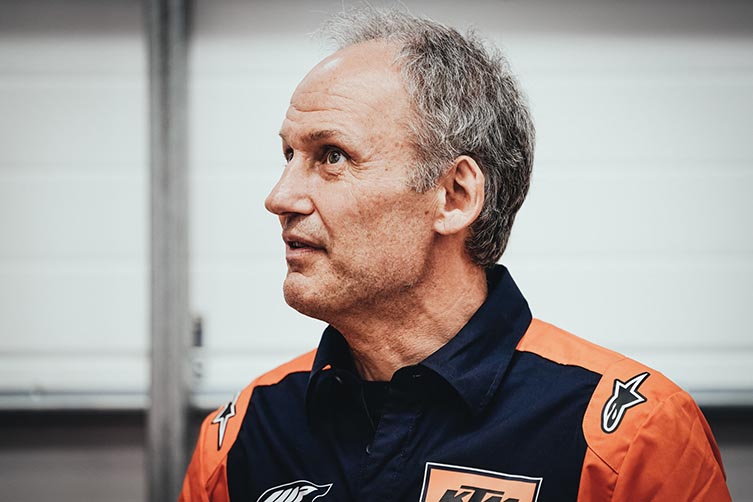
TM: You made an interesting mountaineering analogy at the launch by saying that KTM, as a brand, was now “…climbing Mount Everest, where the thin air means there are only incremental smaller gains to be had, and where you’re leaving a rope behind for others to follow”.
JS: You liked that, hey? [laughs]. The point I was trying to make is that we are already at a very high level with our bikes, and setting the benchmark. It is clear that others are now following the path we are creating.
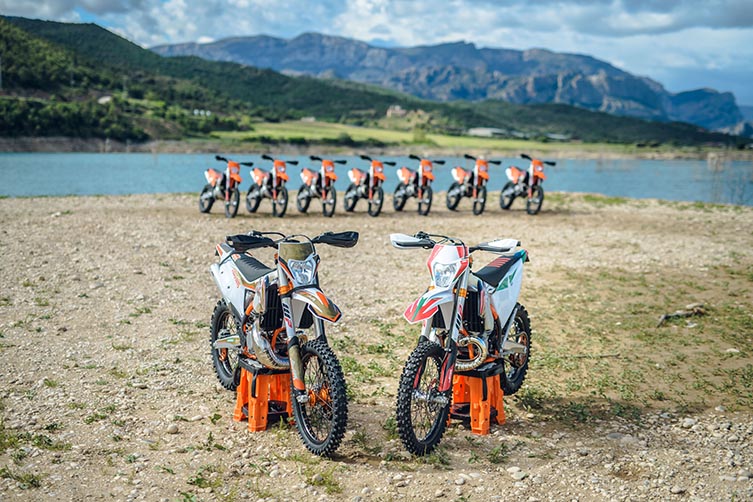
From a design philosophy point of view, it’s interesting that both the engine and chassis teams had the same stated targets for these 2020 models: improved handling and reliability, better overall performance, and a new appearance. In the past, each team has been more specific about what they’re looking to achieve.
Well, in model-year 2017, we had handling, performance and weight savings on the top of our target list. But for 2020, it made sense for both design teams to focus on the handling, reliability and performance goals you mentioned. I mean, we always want to improve overall performance, and make the enduro-specific rideability of the bikes better. Handling is about making the bikes easy to ride. Reliability is something where there is always space to improve. And we always want them to look better than their predecessors.
![]()
“It’s been a drastic evolution of the bikes for 2020. Of the 1100 parts a bike is made up of – 700 of which are in the chassis, and 400 of which are in the engine – more than 650 of them are different.”
![]()
The 2020 bikes don’t look radically different, but the collective mods found on these machines add up to big changes. Does KTM consider them new-generation machines?
It’s a drastic evolution of the bikes. Put it this way: of the 1100 parts a bike is made up of – 700 of which are in the chassis, and 400 of which are in the engine – more than 650 of them are different. So we’re talking about changes to more than 60% of each model’s parts have new part numbers. That means they are either changed or completely redesigned. And that’s massive, especially when you multiply it by all the various specifications we produce the bikes in for markets around the world. When you add all the models than run the PDS shock, I think there are nearly 30 specifications all together. That includes all the available capacities in the EXC and EXC-F, plus the XC-W, Six Days and Erzberg models.
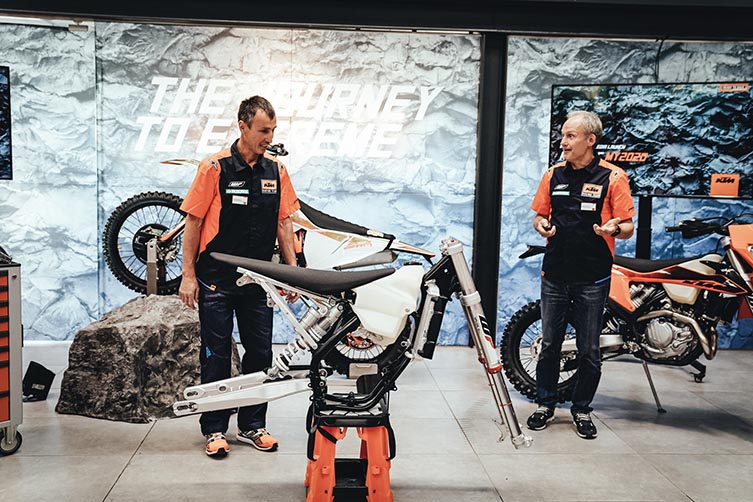
There was also talk about the “journey to extreme” with these bikes at the launch. It sounded like a bit of marketing jargon, but suitability for extreme riding seems to be more front-of-mind for KTM’s design team now. Fair?
Yes. But it’s important to understand that we didn’t compromise the bikes’ abilities for riders who are not using the bike in extreme terrain; we just added extreme terrain capabilities where we could. Ensuring the bikes work even better for extreme riding is definitely more in our focus than it was in the past, but it is never at the expense of the average trailrider. A few examples are the fact we made the bodywork at the rear much slimmer, and the revised suspension settings that we’ve found also work better for extreme riders when they need to preload the fork and shock before a big obstacle. And in doing this, I think we have made the bikes more versatile; we’ve broadened their range of applications. You can ride on Sunday morning with your mate one day, and conquer Erzberg the next.
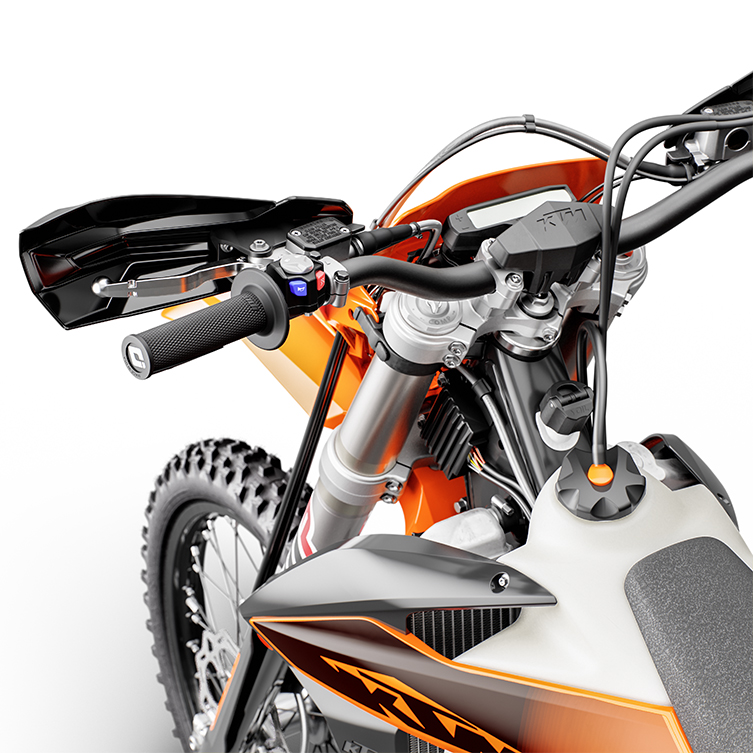
Many of the mods to these 2020 enduro bikes mirror what we saw a year ago on KTM’s MX range. Just explain that process of adapting MX-bike mods to enduro models for us.
Because the motocross and enduro bikes are based on a common platform, we design the bikes right from the very start in a way that makes it easier for us to adapt them to their specific purpose, whether that’s supercross racing or trailriding, or anywhere in between. But in any instance where there would be a compromise in performance, a part is redesigned to suit its application.
Again, looking at the part numbers will reinforce the point that we do not just transfer the changes we make to the motocross bikes directly onto the enduro models. However, when you look at the bodywork on MX and enduro models, for instance, they are very similar. That is because we created the best rider interface possible, and found there was no disadvantage to use it for both styles of racing and riding. So you could say that our MX- and SX-title-winning SX-F models are actually running enduro rear guards [laughs].
![]()
“For 2020, after testing a huge number of prototype frames, we settled on a frame we found to give us the best overall compromise for feeling, speed, stability and agility. And this frame was a little more rigid all-round.”
![]()
A year ago, there was talk that your 2020 models would need to meet the new, more stringent Euro5 noise and emission regulations. Has that legislation been delayed or amended?
Euro5 comes into force in 2020 for new models. But for existing models, the new regulations need to be fulfilled by January 1, 2021. Our 2020 models do not meet Euro5, but they can be registered until the end of 2020.
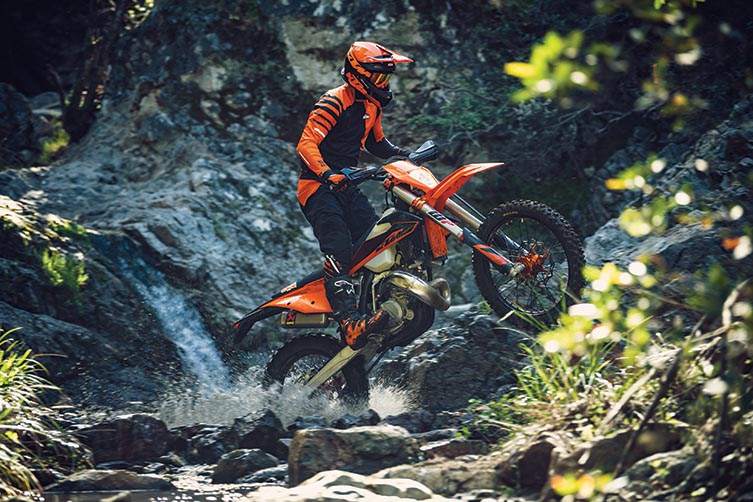
Which means you may need to make significant mods to your enduro models in 12 months’ time, right?
Yes, that’s right. Unfortunately, these regulations do not make the bikes lighter, less complex or cheaper. Our MY20 bikes comply with Euro4 – without any additional mods, such as EVAP systems or additional catalytic converters needed for Euro5.
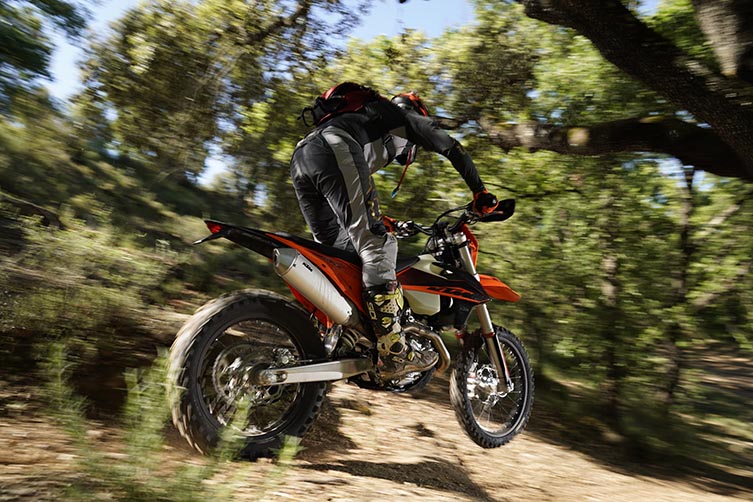
And Euro5 makes it harder for KTM to comply with the rules without compromising the bikes’ performance.
Correct. And there’s a real issue with the legislation imposing extra costs onto manufacturers, often unnecessarily. For example, we will have to fit extra catalytic converters to the bikes, and yet no one will want to use the bikes with those restrictive parts.
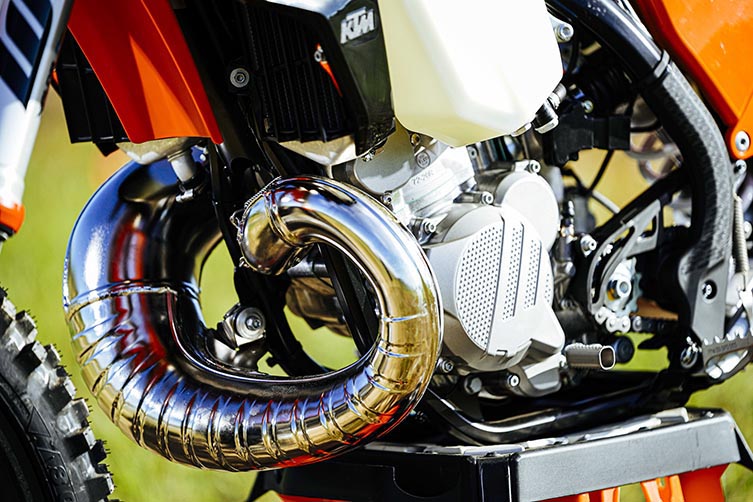
As KTM has a patent pending on its TPI two-stroke EFI technology, it’s going to be very difficult for rival brands to produce high-performance two-strokes that meet the new emission laws, right?
Yes, it is. And in fact, I wonder whether our competitors genuinely have the resources to get involved with this technology. You need to have a lot of resources and know-how if you want to take this project on successfully. I had a chat the other day with a Sherco importer, who asked me how many people KTM has working in R&D. I asked him what he thought, and he estimated 20 or 30 people. I told him that 30 people would be nowhere near enough to adapt two-stroke fuel injection technology to their bikes, and he was amazed to hear that KTM now has almost 600 people in its R&D department. Of course, a small team could make a quick, ‘dirty’ map that would work. But it would not be sophisticated enough to ensure performance and rideability in all conditions.
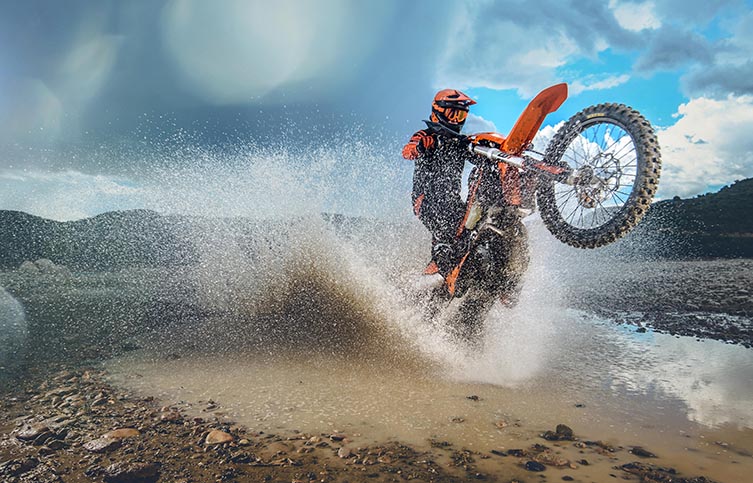
A year ago, KTM moved from a previous supplier for its transmissions to Pankl, which is renowned in F1 circles. Do all models now run the higher-spec Pankl gearboxes?
In the past, we used two external suppliers for our transmissions, but after we built up our own Pankl factory, we moved primarily to these. As the number of bikes we now produce makes big demands on Pankl, we retained one of those external gearbox suppliers, and still use them on two models, the 450 and the 500cc. The rest use Pankl.
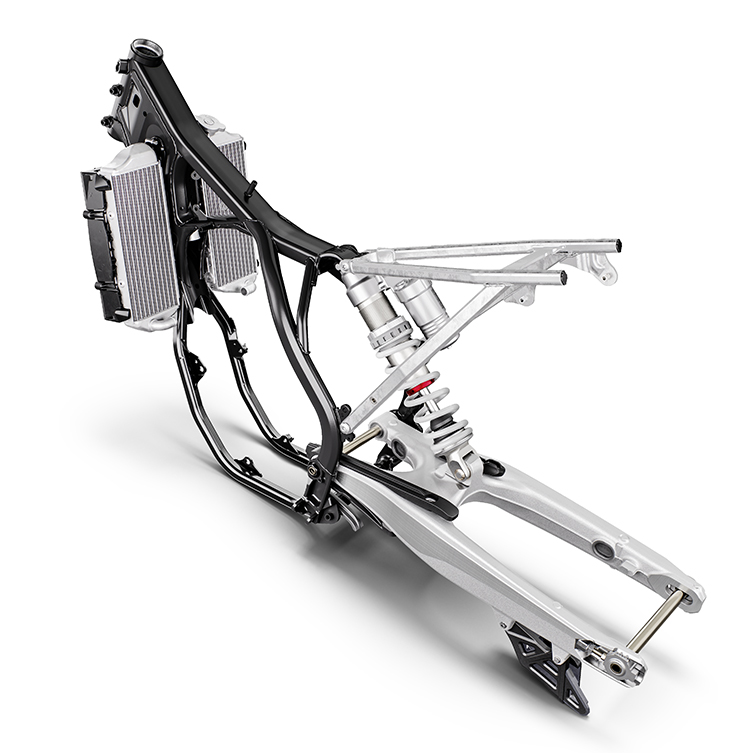
Ever since 2012 – when KTM released their all-new-generation bikes and fuel injection across the four-strokes range – your design teams have been constantly adding longitudinal flex to the enduro models’ frames. But for 2020, the frames have been made more rigid in both torsional and longitudinal planes. Explain why.
You’re right. For those 2012 models, we first properly introduced the chromoly frame as an added damping member to assist the suspension, and we have added a lot of longitudinal flex since – an extra 30% in 2017, for instance, which is massive. For 2020, after testing a huge number of prototype frames – each with different geometry and flex characteristics – we settled on a frame we found to give us the best overall compromise for feeling, speed, stability and agility. And this frame was a little more rigid all-round, as you mentioned. In other words, we found that we may have gone a little too far with longitudinal flex. You need to test these frames because it’s very difficult to test the feeling you get on a motorcycle with computer simulations. I call it the ‘poo-poo meter’ [laughs]; the seat-of-your-pants feel.
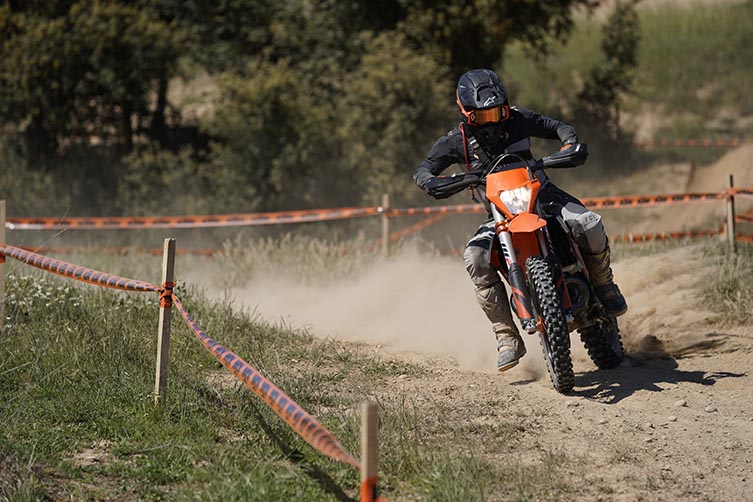
The other interesting change to the 2020 bikes’ rolling chassis is the move to softer fork springs, which have been offset by firmer damping.
Yes. And this is quite a significant change. Again, our extensive testing reinforced that these fork settings create more stability, confidence and rideability. Even though the fork has firmer compression damping, I do not think you would say that the set-up is now too race-oriented for trailriders. The combination of the spring and damping changes makes the ride incredibly comfortable, and yet you can push it further without finding the limit. It has much better reserves when it comes to bottoming resistance. I think we have now found an excellent compromise between sensitivity for the trails and the demands of faster, more aggressive riders at high speed. On the previous two models, I always had the feeling that the fork settings were just a little on the soft side.
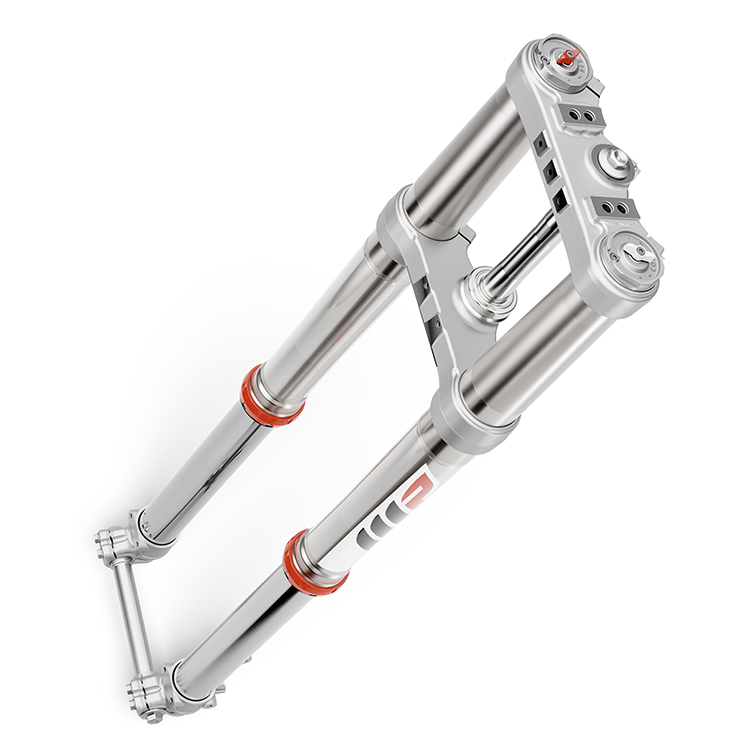
Two-strokes represent more than half of KTM’s off-road bike sales – worldwide and in Australia – which is why there seems to have been so much time and R&D energy focus on the TPI models. So, how far forward has the level of sophistication in the TPI technology come in the past two years?
A long way forward! Two-strokes are a huge part of our off-road program, and they promise to be that way for many years to come. This is particularly the case because of the growing number of riders who are into riding extreme terrain, which is something the WESS series [World Enduro Super Series] recognises. When we launched the TPI machines two years ago, they more than matched the performance of the carb bikes already, but we knew there was significant room for improvement. And, yes, much more sophistication in the TPI technology has been a big part of realising the bike’s added potential. The involvement of our factory riders has really pushed the two-stroke project forward too.
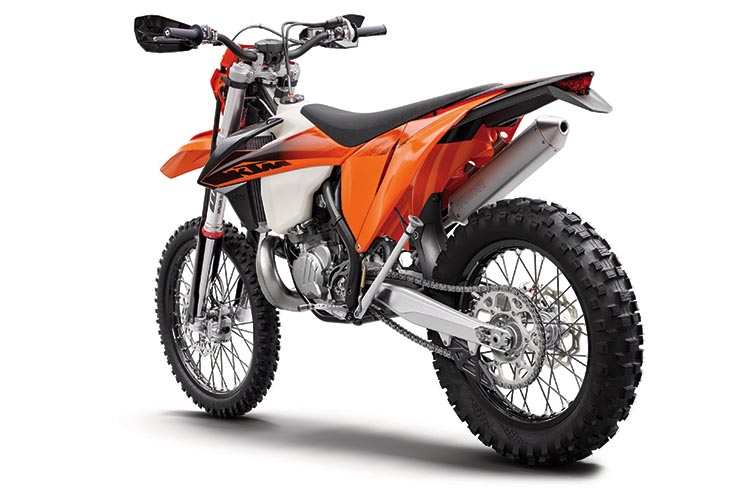
What’s your favourite bike in the 2020 model range? You’re still a two-stroke die-hard right, Jochi?
Yes, a two-stroke. But my favourite has actually changed from the 300 to the 250 this year. I think it gained a lot on the 300 this year, especially in the engine’s bottom-end power. And for me, it’s now a much sportier bike, but still super-easy to ride without demanding too much from the rider or wearing you out. I also like very much the 250cc four-stroke. I like the smaller-capacity engines because having to rev them higher makes me feel younger [laughs]. I know the 350EXC-F is still your favourite, Andy, and I understand that because it comes with the benefits of both the smaller- and larger-capacity models.
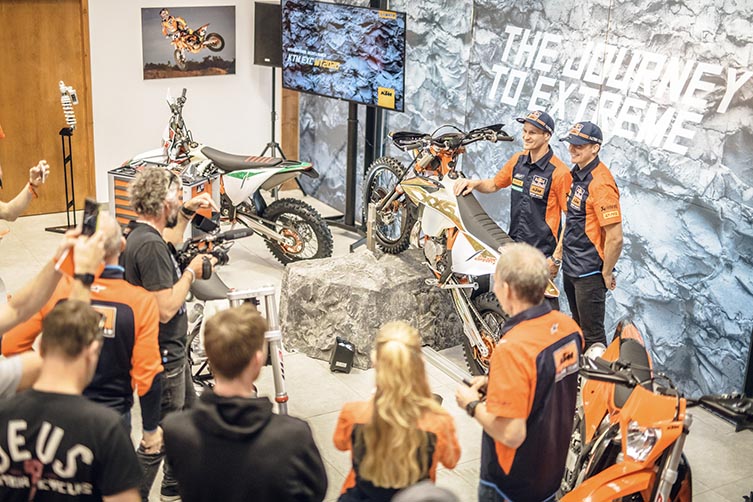
And aside from KTM’s sister company, Husqvarna, no one else on the market makes a 350cc four-stroke.
That’s right, incredibly! We introduced that 350EXC-F in 2012 and it has turned out to be such a popular model. We fought hard to make it strong enough to compete in the E2 class against the 450cc machines, and Antoine Meo won KTM an Enduro World Championship title with it. Now with the WESS series, many of our factory riders choose the 300EXC TPI for the extreme rounds, and the 350EXC-F for the more traditional enduro rounds. For instance, Taddy Blazusiak uses the 350EXC-F for the fast WESS races.
More on KTM’s 2020 Enduro Range
🎥 TESTED: KTM’S 2020 EXC ENDURO RANGE

TESTED: KTM’S 2020 ENDURO RANGE

KTM’S 2020 EXC RANGE: OBSERVATIONS
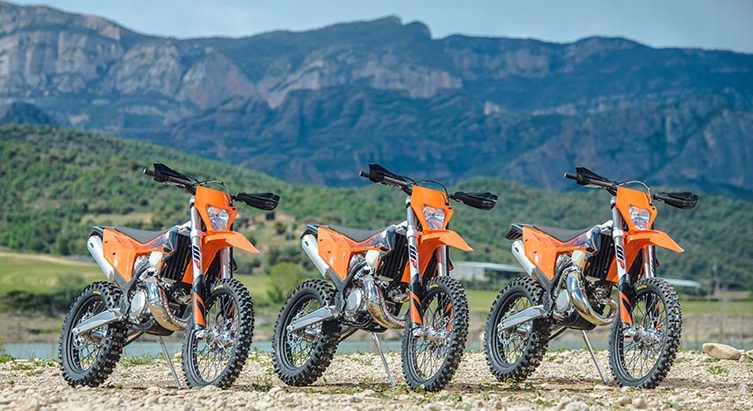

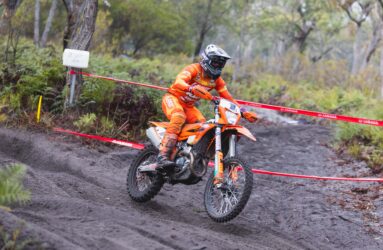
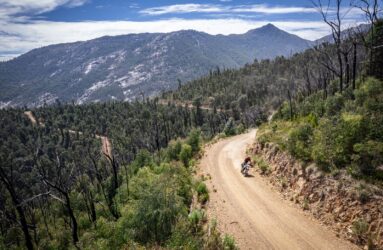
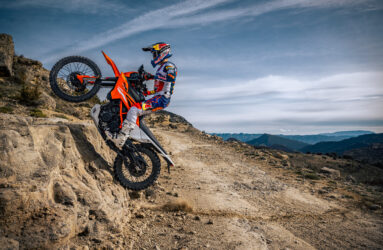
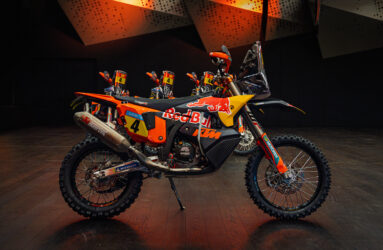
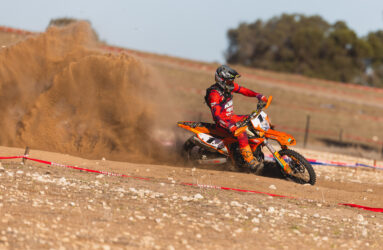
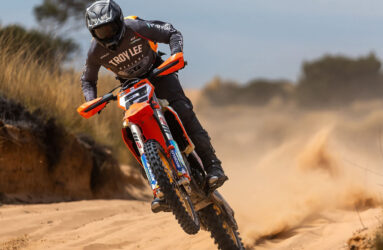
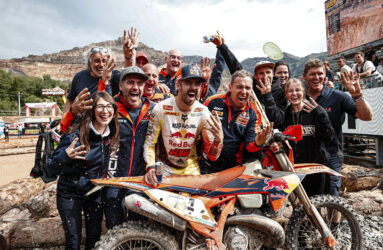
Be the first to comment...